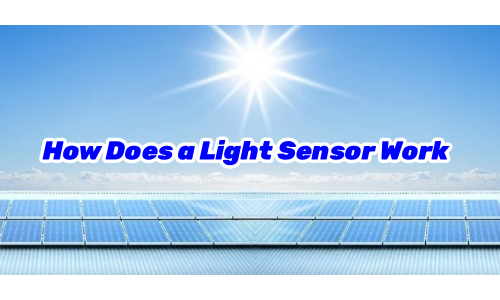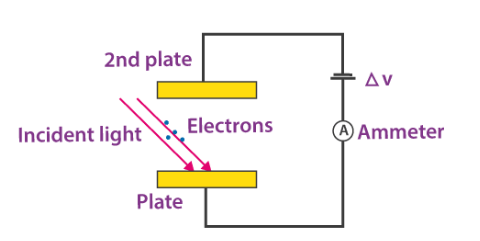A light sensor, also known as a photo sensor or photodetector, is a device that detects light and converts it into an electrical signal. Light sensors are used in a wide range of applications to measure light intensity, trigger responses based on changes in light levels, and control the operation of various devices.

Here are some key points about light sensors:
-
Function: Light sensors work based on the principle of the photoelectric effect. When light falls on the sensor, it generates an electrical current or voltage proportional to the intensity of the light.
-
Types: There are various types of light sensors, including photodiodes, phototransistors, photoresistors (LDRs - Light Dependent Resistors), photovoltaic cells (solar cells), and photodiode arrays. Each type has its own characteristics and is suitable for specific applications.
-
Applications: Light sensors are used in automatic lighting systems, photography, solar panels, industrial automation, consumer electronics (like smartphones for automatic screen brightness adjustment), and in many environmental monitoring systems.
-
Working Principle: Photodiodes and phototransistors generate an electrical current when exposed to light, while photoresistors change their resistance based on light intensity. Photovoltaic cells convert light energy into electrical energy, making them suitable for generating electricity in solar panels.
-
Calibration: Light sensors may need calibration to ensure accuracy in light measurement. Calibration involves adjusting the sensor's response to match a known light source or standard.
-
Response Time: Light sensors have different response times, which determine how quickly they can detect changes in light levels. Some sensors can respond rapidly to changes, while others may have a slower response.
Light sensors play a crucial role in various fields, providing valuable data for automatic control systems, energy harvesting applications, environmental monitoring, and more. Their versatility and reliability make them essential components in modern technology for a wide range of functions that depend on light detection and measurement.

How Does Light Sensor Work
Light sensors work based on the principle of converting light energy into electrical signals. There are several types of light sensors, each using different mechanisms to detect light. Here are explanations on how some common types of light sensors work:
-
Photodiode:
- A photodiode is a semiconductor device that generates a current when exposed to light. When photons (light particles) strike the photodiode, they create electron-hole pairs in the semiconductor material, leading to the flow of current.
- The greater the intensity of light falling on the photodiode, the higher the current generated. Photodiodes are widely used in light meters, optical communication systems, and ambient light detection in electronic devices.
-
Photoresistor (Light Dependent Resistor - LDR):
- A photoresistor is a passive component whose resistance changes with varying light levels. When exposed to light, the resistance of the photoresistor decreases, allowing more current to flow through it.
- The resistance of the photoresistor increases as the light intensity decreases. LDRs are commonly used in automatic outdoor lighting systems, photography, and light level detection circuits.
-
Phototransistor:
- A phototransistor is a type of transistor that changes its conductivity in response to light. When photons strike the base-collector junction of the phototransistor, they create electron-hole pairs, increasing the conductivity between the collector and emitter.
- Phototransistors can amplify the current generated by light, making them suitable for low-light level detection applications, such as in optical sensors and light barriers.
-
Photovoltaic Cell (Solar Cell):
- Photovoltaic cells, commonly known as solar cells, convert light energy into electrical energy through the photovoltaic effect. When sunlight hits the solar cell, it excites electrons and creates an electric current.
- Solar cells are widely used to generate electricity in solar panels for residential, commercial, and industrial applications, as well as in spacecraft and satellites for power generation.
-
Calibration and Sensitivity:
- Light sensors may require calibration to ensure accurate measurement of light levels. Calibration involves adjusting the sensor's response to match a known light source or standard.
- The sensitivity of a light sensor refers to its ability to detect small changes in light intensity. Sensor sensitivity can be optimized for specific applications through calibration or adjustments.
Overall, light sensors provide essential functionality in various electronic devices and systems by detecting light levels, triggering responses, controlling lighting systems, and capturing light data for applications ranging from photography to solar energy generation.

Where is the Sensor on a Light
The location of the sensor on a light can vary depending on the type of light fixture and the specific design of the sensor. In many cases, the sensor is integrated into the light fixture itself and may be positioned in different locations for optimal light detection and functionality. Here are some common placements of sensors on lights:
-
Outdoor Security Lights:
- In outdoor security lights, motion sensors or photocells are often located on the top or sides of the light fixture.
- Motion sensors detect movement in the vicinity and trigger the light to turn on, providing added security and illumination when someone approaches.
- Photocells (light sensors) are typically placed on top of the fixture to detect ambient light levels. They automatically turn the light on at dusk and off at dawn, conserving energy.
-
Indoor Lighting Systems:
- In indoor lighting systems, sensors may be integrated into the light fixture itself or connected externally.
- Dimmer switches with light sensors can adjust the brightness of the light based on ambient light levels or user preferences.
- Some smart lighting systems incorporate sensors to detect occupancy, motion, or daylight levels to automate lighting control for energy efficiency and convenience.
-
Streetlights:
- Streetlights often have sensors located on top of the pole or integrated into the luminaire to detect ambient light levels and trigger the light to turn on/off or adjust brightness accordingly.
- Motion sensors may also be incorporated in streetlight systems to detect nearby movement and illuminate the area as needed.
-
Automotive Lights:
- In vehicles, light sensors may be located on the dashboard or integrated within the headlight housing.
- Light sensors in automotive lighting systems can adjust the brightness of interior lights, control automatic headlights, or enable adaptive lighting features based on external light conditions.
The specific placement of the sensor on a light fixture is determined by factors such as the type of sensor (motion sensor, light sensor, occupancy sensor), the intended functionality of the light, and the design considerations of the lighting system. Manufacturers carefully position sensors to optimize their performance in detecting motion, light levels, occupancy, or other relevant parameters to enhance the efficiency, automation, and effectiveness of the lighting system.

Light Sensor Applications
Light sensors, also known as photodetectors, are utilized in a wide range of applications across various industries due to their ability to detect light levels, measure light intensity, and trigger responses based on light input. Here are some common applications of light sensors:
-
Automatic Lighting Systems:
- Light sensors are used in automatic lighting systems to control the activation and dimming of lights based on ambient light levels. For instance, outdoor lights can be programmed to turn on at dusk and off at dawn using light sensors, promoting energy efficiency.
-
Photography:
- Light sensors play a critical role in photography for measuring ambient light levels and setting appropriate exposure settings. Light meters use sensors to determine the optimal camera settings for capturing well-exposed photographs.
-
Solar Energy Systems:
- Photovoltaic cells, a type of light sensor commonly used in solar panels, convert sunlight into electrical energy. Solar panels harness sunlight through photovoltaic cells to generate electricity for residential, commercial, and industrial applications.
-
Automotive Lighting:
- Light sensors in vehicles are integrated into lighting systems to automatically switch between high beams and low beams based on the presence of oncoming vehicles or ambient light levels. This feature enhances driving safety and convenience.
-
Smartphones and Tablets:
- Light sensors are incorporated into smartphones and tablets to adjust screen brightness based on surrounding light conditions. This feature, known as auto-brightness control, enhances user comfort and optimizes battery life.
-
Consumer Electronics:
- Light sensors are used in various consumer electronics devices to control backlighting and power-saving features. For example, light sensors in televisions adjust screen brightness for improved viewing experiences and energy efficiency.
-
Industrial Automation:
- Light sensors are employed in industrial automation for product detection, sorting, and monitoring processes. Photoelectric sensors, utilizing light beams to detect objects, are commonly used in manufacturing facilities for automation and quality control applications.
-
Security Systems:
- Motion sensors with light-detecting capabilities are integrated into security systems to detect motion and trigger lighting responses in outdoor and indoor spaces. This enhances security measures by illuminating areas where motion is detected.
-
Agriculture and Horticulture:
- Light sensors are used in agriculture and horticulture to monitor light levels for plant growth and development. Grow lights equipped with light sensors provide optimal lighting conditions for indoor plant cultivation.
-
Environmental Monitoring:
- Light sensors are crucial components in environmental monitoring systems for measuring light intensity in climate studies, weather stations, and ecological research.
These are just a few examples of the diverse applications of light sensors in various fields, demonstrating their versatility and importance in modern technology and industry.



